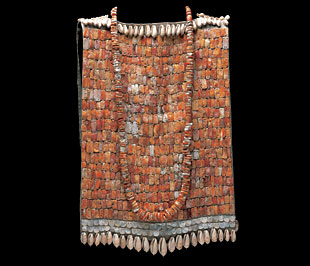|
























|
|









Ancestral Cultures
For the Aztecs and other indigenous nations, prestigious cities and ancient peoples that had flourished in the past were prototypes of wisdom and power. Their chroniclers, for example, related the mystery of the Olmec people and the mythic grandeur of the cities Teotihuacan and Tula.
At the time of the founding of Mexico-Tenochtitlan, the Aztecs sought the roots of their identity in this glorious past. They carried out excavations in the ruins of ancient indigenous cities, mainly to obtain valuable ancient artworks, especially masks, vessels, stone figurines, and ornaments. By adding elements to these pieces, they gave them an Aztec character, thus demonstrating the link between the past and their conquering vision of the present and future.
The city of Mexico-Tenochtitlan had been pointed out by Huitzilopochtli, patron god of the Aztecs, as the seat of their power. From this city, amid lakes and surrounded by shields of war, they would send out their armies in the four directions of the universe.
Cuirass. Toltec, ca. 900–1200. Spondylus shell, mother of pearl, and snail shells, 37 x 110 x 3 cm. Museo Regional de Hidalgo "Ex Convento de San Francisco," INAH, Pachuca. Photo Michel Zabé, assistant Enrique Macías.
|
|